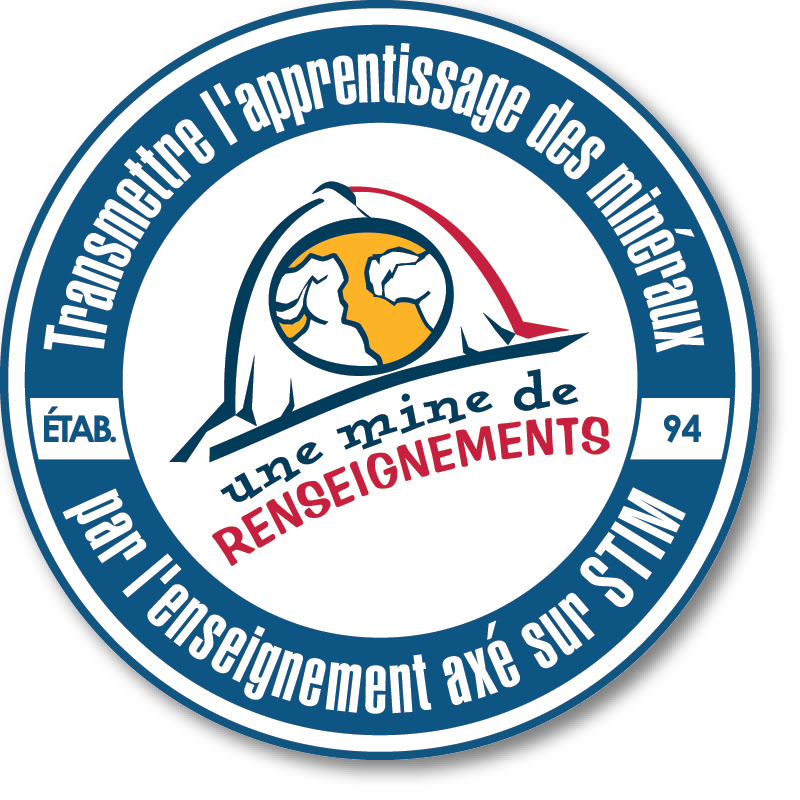
Rock Identification Guide
Complete with photos and information about each rock’s distinguishing characteristics, this rock identification guide has been designed to assist you in identifying the rocks provided in the Deeper and Deeper and Mining Matters II kits.
This guide also includes information about how each rock was formed, the location from where they were collected and their uses in everyday life.
Year after year, in-kind contributors from the mineral and aggregate industries provide valuable resources for our educational units. The sheer number and variety of rock and mineral samples required to produce the units is immense. More than 60 samples representing 25 different types of metallic and industrial minerals, aggregates, and the three main rock groups – igneous, sedimentary, and metamorphic – are required for each kit. Mining Matters relies greatly on our industry partners, resident geologists from the Ontario Ministry of Northern Development and Mines, and a crew of students to aid in the collection and sizing of samples. We would like to take this opportunity to thank our many in-kind contributors for their ongoing support.
- Basalt
-

Rock Type: igneous (extrusive/volcanic)
Composition: feldspar, olivine, pyroxene, amphibole
Equivalent to: Gabbro (intrusive/plutonic)
Environment: Basalt is solidified lava, like rhyolite. However, it flows much quicker because it is less viscous. The Hawaiian Islands are made of basaltic lava. The ocean floor is also mostly basalt.
Distinguishing Characteristics: red brown to black, frothy with small visible holes where gas escaped while the lava cooled.
Origin of your Samples: Sault Ste. Marie, Ontario
Uses: Basalt is crushed and used as crushed stone, concrete aggregate, and railroad ballast. Basalt fibres are used in the production of high-quality textile fibres, floor tiles, basalt plastic reinforcement bars, basalt fibre roofing felt, and glass wool (fibre glass).Basalt samples courtesy of the Resident Geologist Program, Ontario Ministry of Northern Development and Mines.
- Conglomerate
-
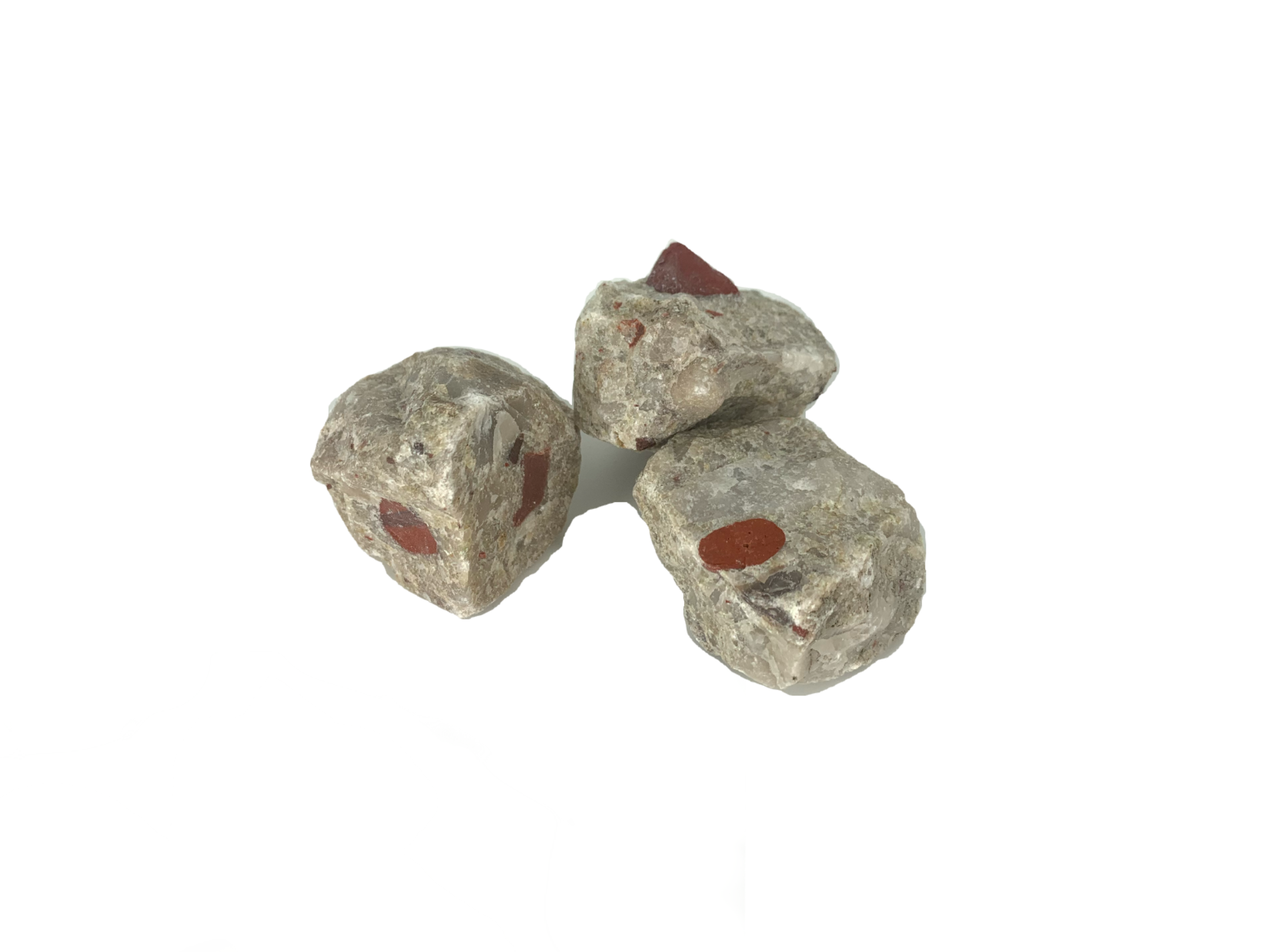
Rock Type: sedimentary
Composition: fragments of other rocks and minerals cemented by silica, calcite, or iron oxide.
Environment: The rock fragments can be rounded from being rolled along a stream bed or a beach during transportation. If the fragments embedded in the matrix are angular instead of rounded, the rock is called a breccia (pronounced BRECH-i-a).
Distinguishing Characteristics: dark grey with imbedded fragments
Origin of your Samples: Kirkland Lake, Ontario
Uses: conglomerate is used in the construction industry.Conglomerate samples courtesy of the Resident Geologist Program, Ontario Ministry of Northern Development and Mines.
- Dolostone
-
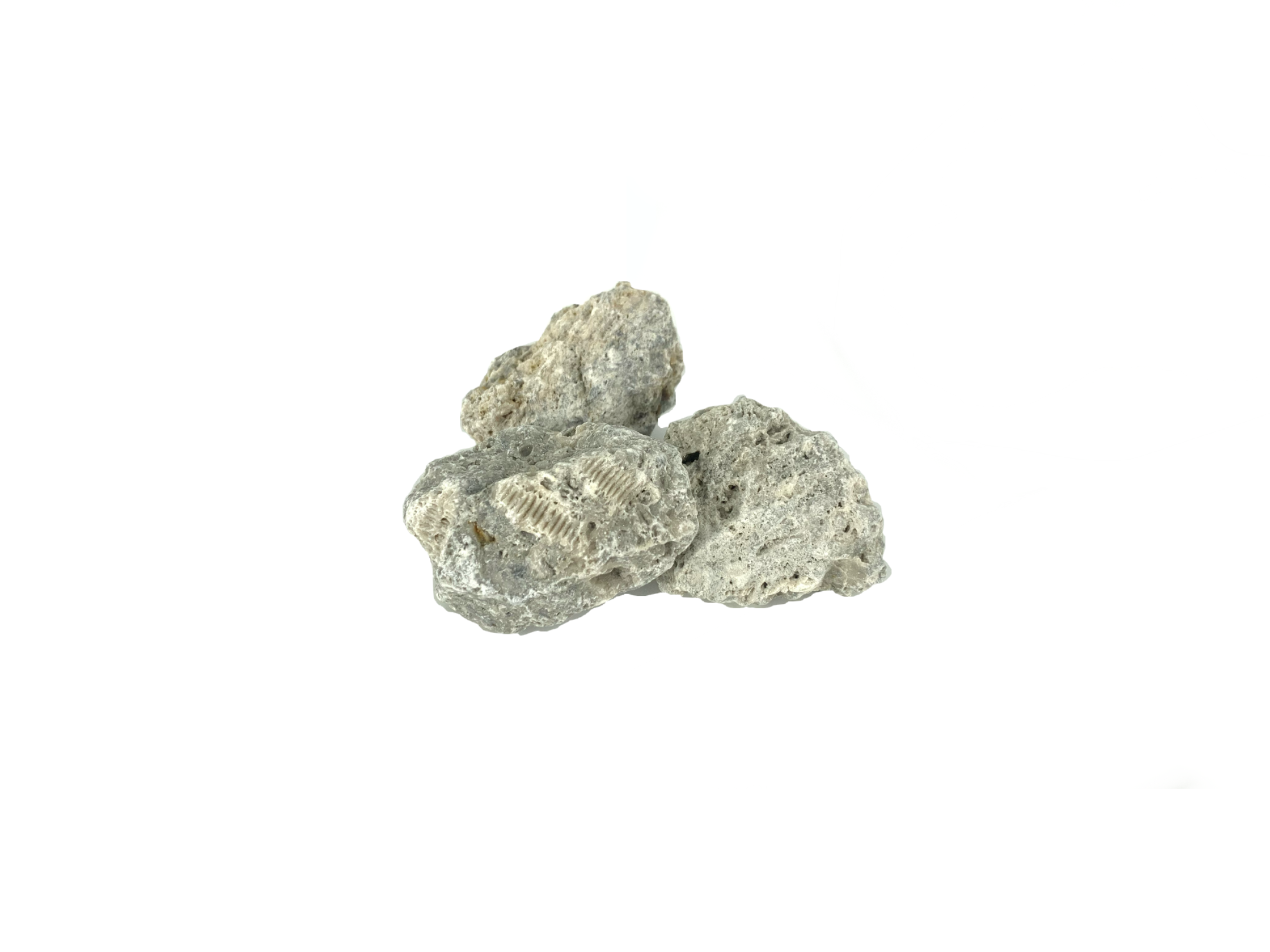
Rock Type: sedimentary
Composition: dolomite and fossils
Metamorphoses to marble
Environment: Sea water, high in magnesium, flows through porous limestone and replaces some of the calcium with magnesium turning limestone into dolostone. Fossils are plants or animals that have been preserved in rock as organic carbon, chitin, or some mineral that replaced the original tissue. When an animal or plant dies, its body can end up being buried by mud or other sediments. The hard parts (skeleton, teeth, shell) and sometimes tissue (leaves, flowers, muscle, cartilage) may be preserved when the sediments become rock.
Distinguishing Characteristics: Grey with fossils that are visible. Anything that looks like it was once alive may be a fossil. Fossils are often the same colour as the rocks in which they are found.
Origin of your Samples: Niagara Escarpment in Milton, Ontario
Uses: Dolostone from the Niagara Escarpment is used as high-quality construction aggregates. It is found in asphalt mixes for roads and streets, high strength concrete mixes used for high-rise residential buildings, bridge overpasses, sidewalks, and airport runways. Crushed dolostone is used to create drainage layers under high volume roads and is found in uncontaminated construction fill.Dolostone samples courtesy of Dufferin Aggregates, Milton Quarry.
- Gabbro
-
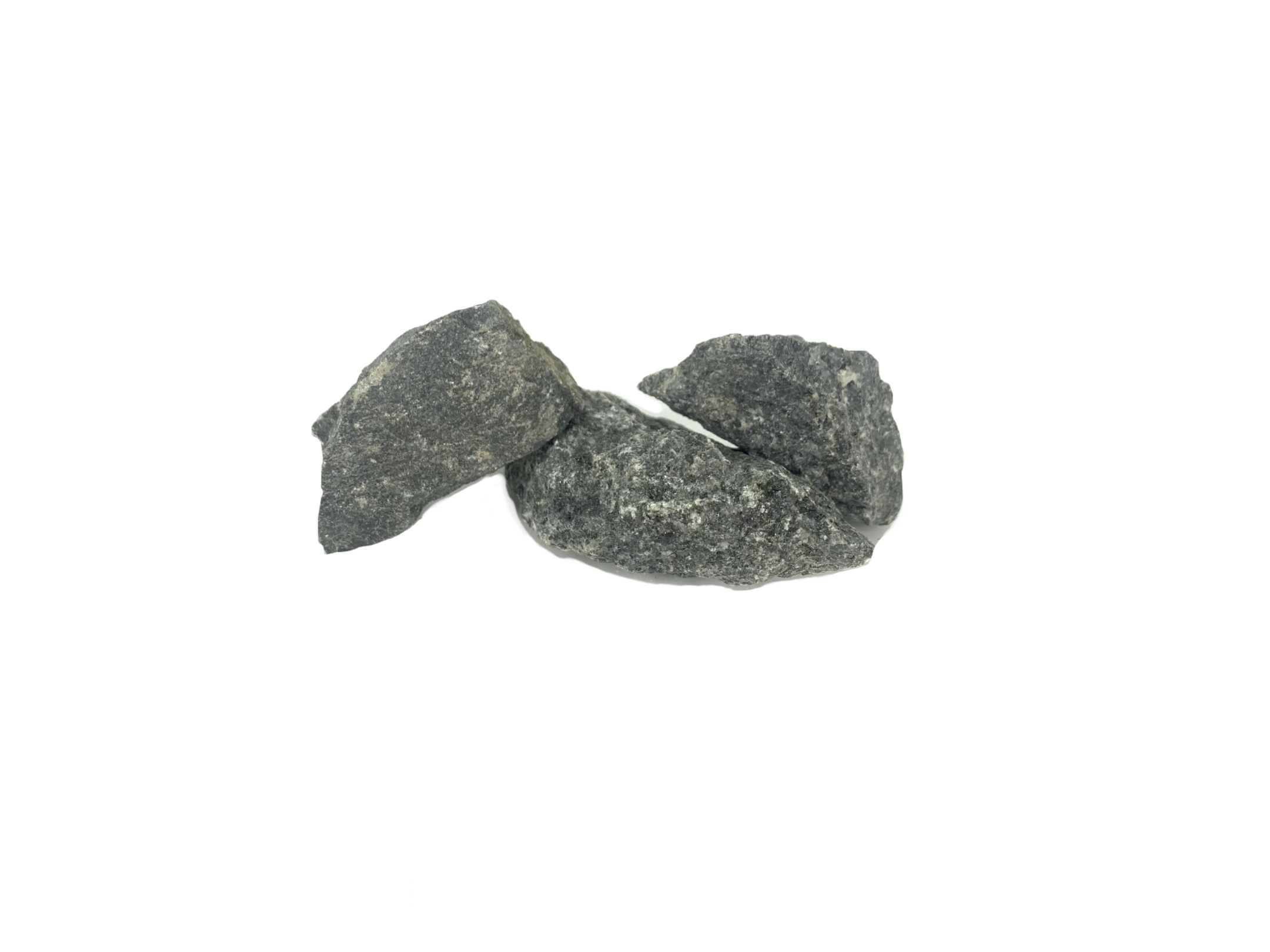
Rock Type: igneous (intrusive/plutonic)
Composition: feldspar, olivine, pyroxene, amphibole
Equivalent to: Basalt (extrusive/volcanic)
Environment: Gabbro is formed by magma that cools very slowly into hard rock below or within the Earth’s crust.
Distinguishing Characteristics: dark grey-black, shiny surfaces of feldspar are visible.
Origin of your Samples: Tweed, Ontario
Uses: Gabbro is too fragile to use in construction. Often chromium, nickel, and platinum occur in association with Gabbro.Gabbro samples courtesy of the Resident Geologist Program, Ontario Ministry of Northern Development and Mines.
- Gneiss
-
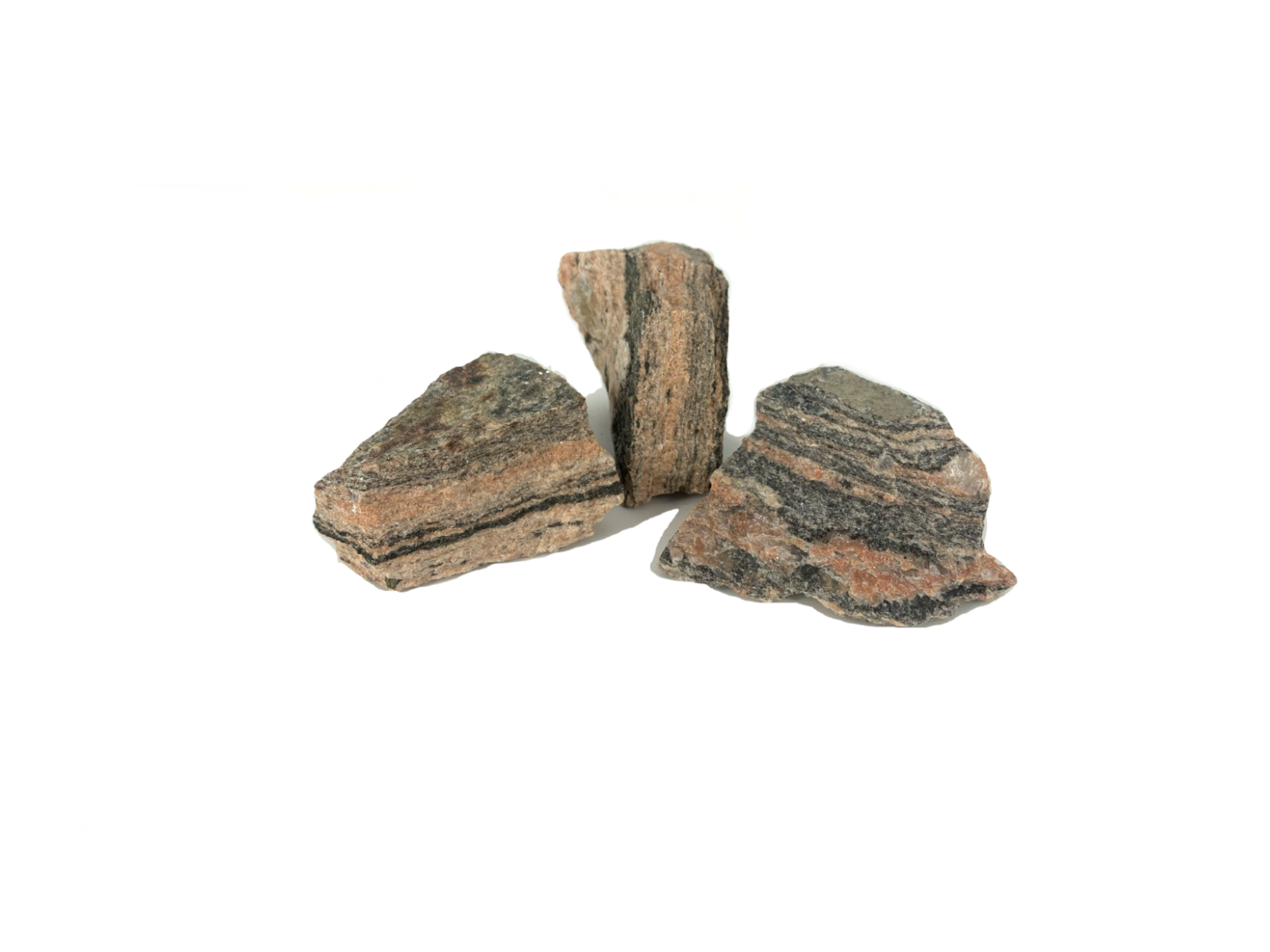
Rock Type: metamorphic
Composition: quartz, feldspar, mica
Original Rock: granite, gabbro
Environment: Gneiss forms at high temperatures and pressures. The temperature needed to create gneiss is about 700°C and the pressure needs to be about 12-15 kilo bars, which is a depth of about 40 km.
Distinguishing Characteristics: banded with alternating layers of dark and light minerals.
Origin of your Samples: Parry Sound, Ontario
Uses: Gneiss is used in construction, aggregate, and for ornamental purposes.Gneiss samples courtesy of Fowler Construction Company Ltd.
- Granite
-
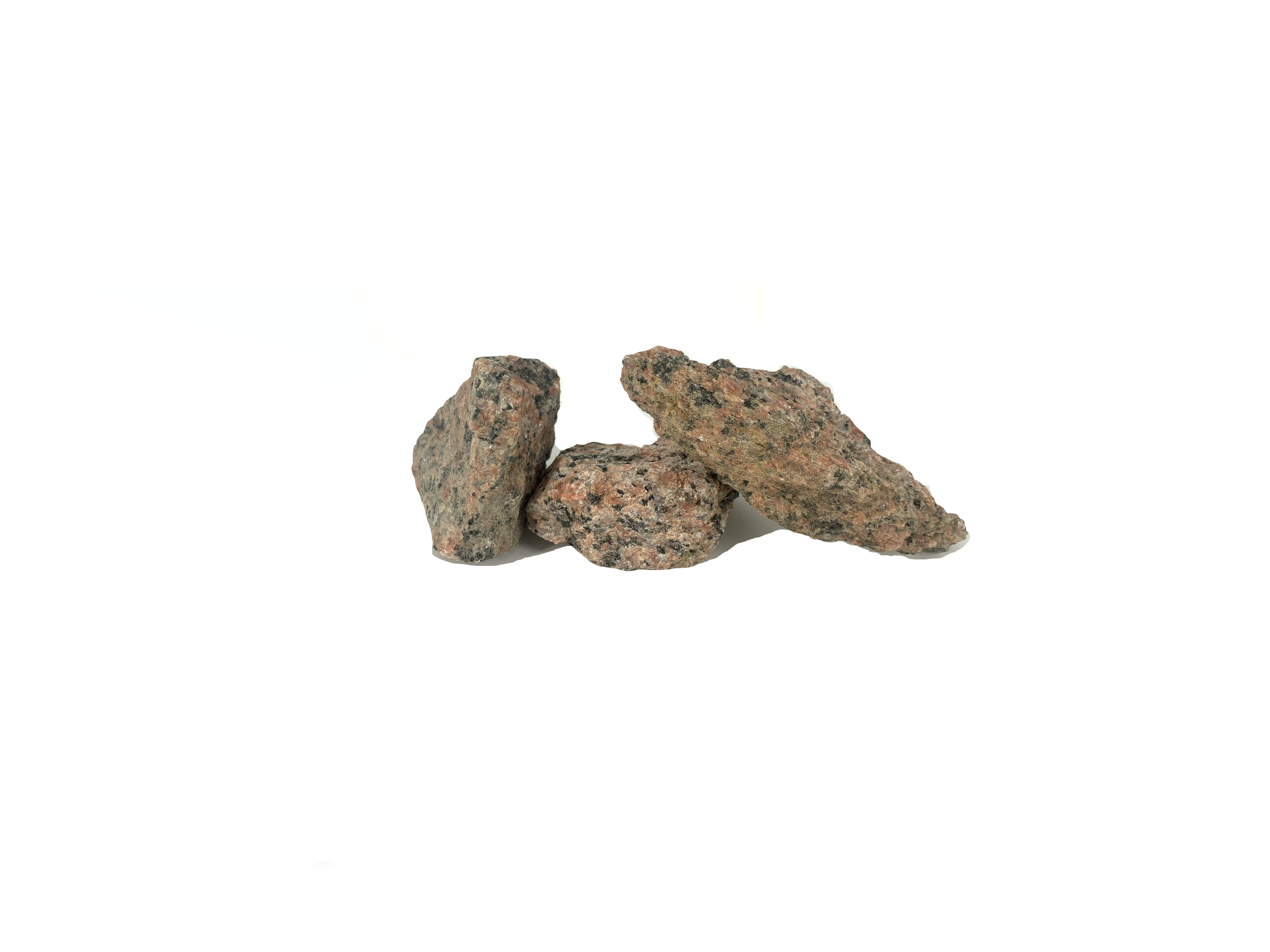
Rock Type: igneous (intrusive/plutonic)
Composition: feldspar, quartz, mica, hornblend
Equivalent to: rhyolite (extrusive/volcanic)
Environment: Granite is formed by magma that cools very slowly into hard rock below or within the Earth’s crust.
Distinguishing Characteristics: Visible crystals of pink feldspar, white or grey quartz, and black mica. There is no horizontal banding in granite.
Origin of your Samples: Belmont Township, Ontario
Uses: Granite is used for kitchen countertops and as a decorative building material. Granite is not fire-safe because it can crack in high heat.Granite samples courtesy of the Resident Geologist Program, Ontario Ministry of Northern Development and Mines.
- Limestone
-
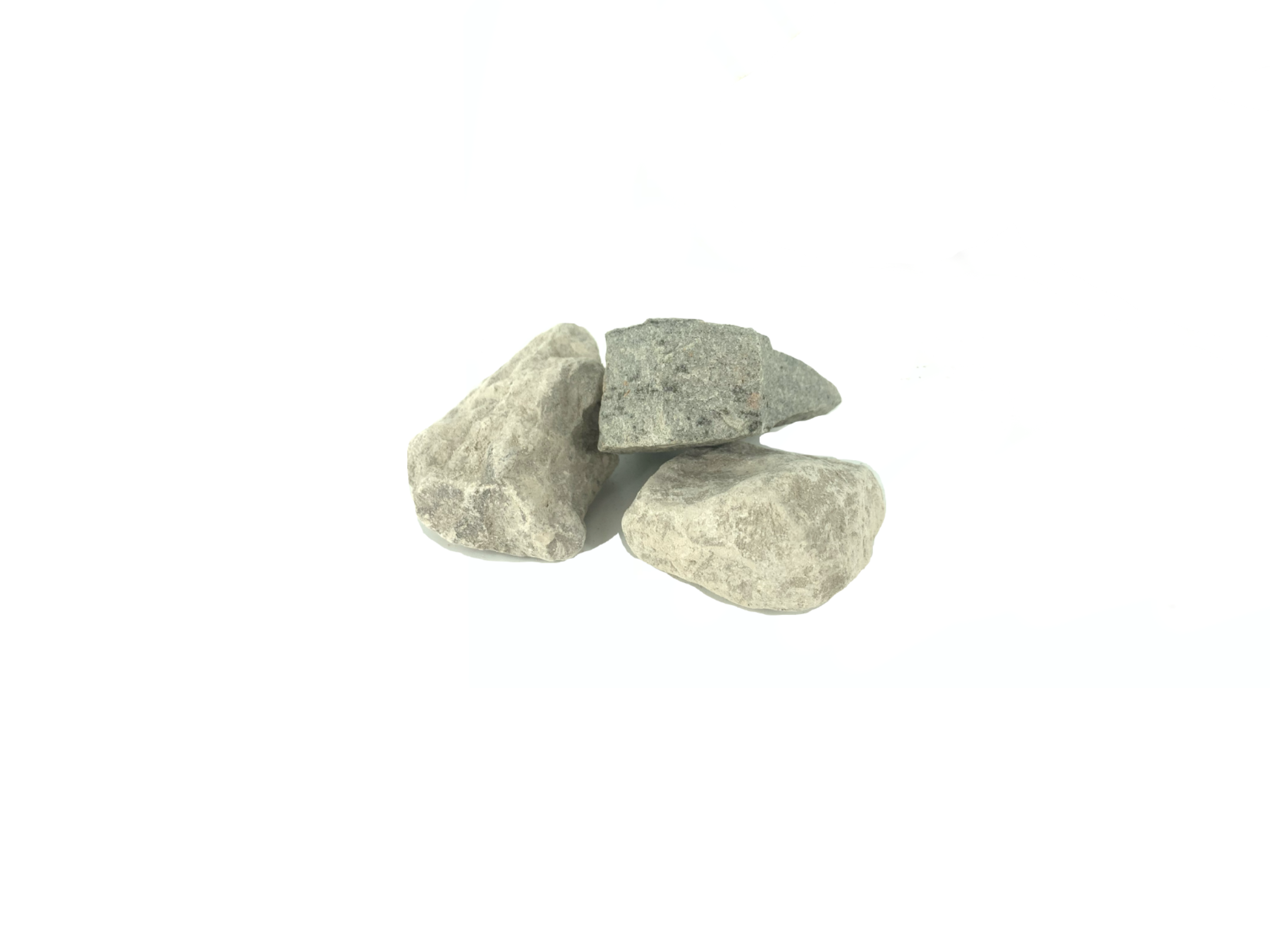
Rock Type: sedimentary
Composition: mostly calcite
Environment: There are several ways for limestone to form. Calcite dissolves easily in warm water but when the concentration reaches a certain threshold, the calcite comes out of solution and is deposited on the sea floor as a chemical precipitate. The precipitates can build up along with other sediments or on their own and eventually form limestone. Another way for limestone to form is by the build-up of the shells and skeletons of marine animals.
Distinguishing Characteristics: whitish grey with a chalky texture. There are no visible fossils in these samples.
Origin of your Samples: Ingersoll, Ontario
Uses: This highly pure limestone is used as flux in the steel making process and is used in the production of glass. Other applications include paper production, sugar refining, acid lake treatment, and flue gas desulphurisation. Limestone has construction, agricultural, and automotive applications. It is also supplied to feed mills and chicken farmers.Limestone samples courtesy of Beachville Lime Ltd.
- Marble
-
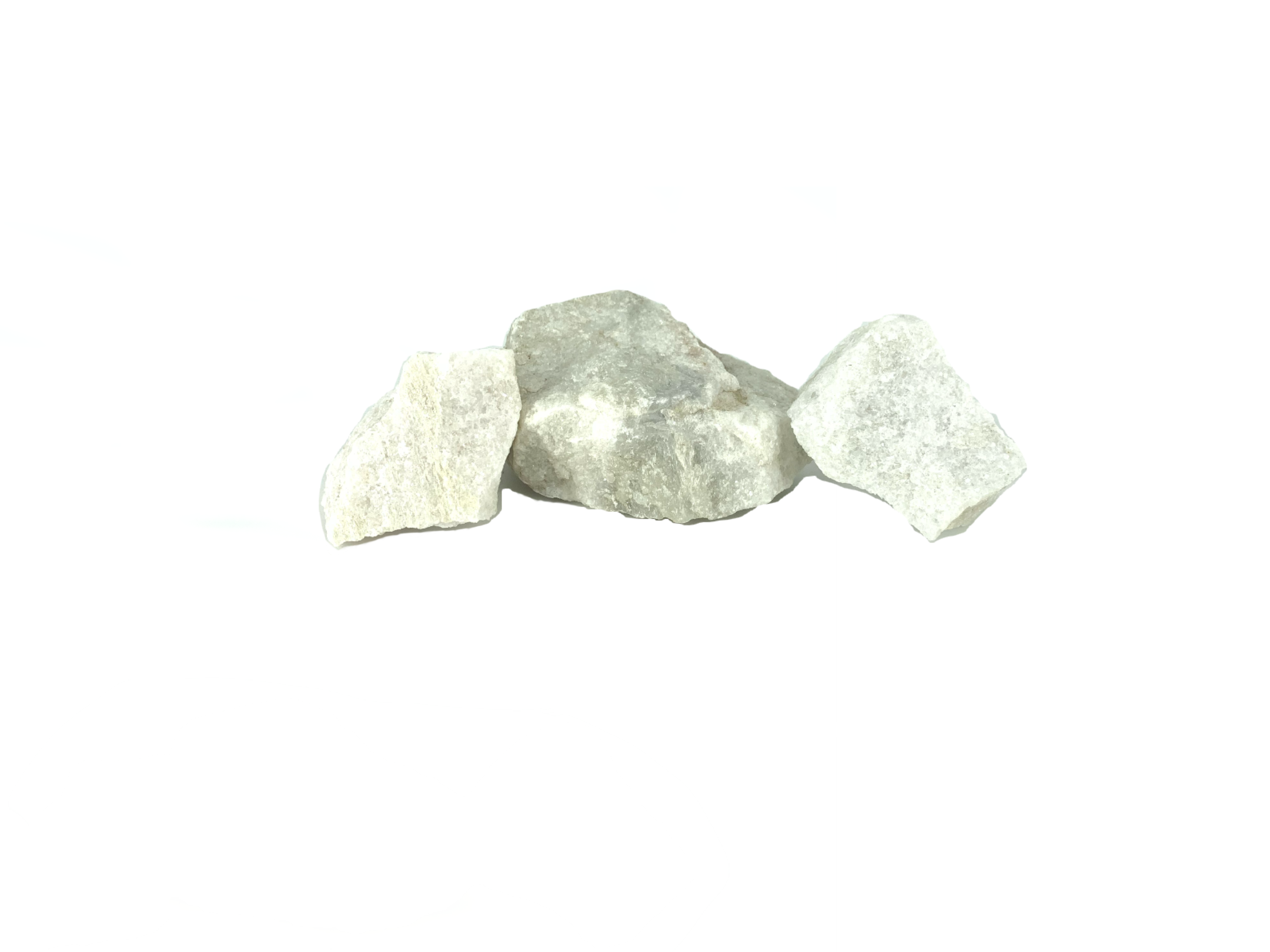
Rock Type: metamorphic
Composition: very pure, recrystallized calcite
Original Rock: limestone or dolostone
Environment: Marble forms at many temperatures and pressures.
Distinguishing Characteristics: medium to coarser grained, light coloured, and calcite crystals may be visible. Holding these samples up to the light and slowly turning them will reveal a slight sparkle.
Origin of your Samples: Madoc, Ontario
Uses: Marble is used for construction, countertops, and carvings, and may be a source for magnesium.Marble samples courtesy of the Resident Geologist Program, Ontario Ministry of Northern Development and Mines.
- Quartzite
-
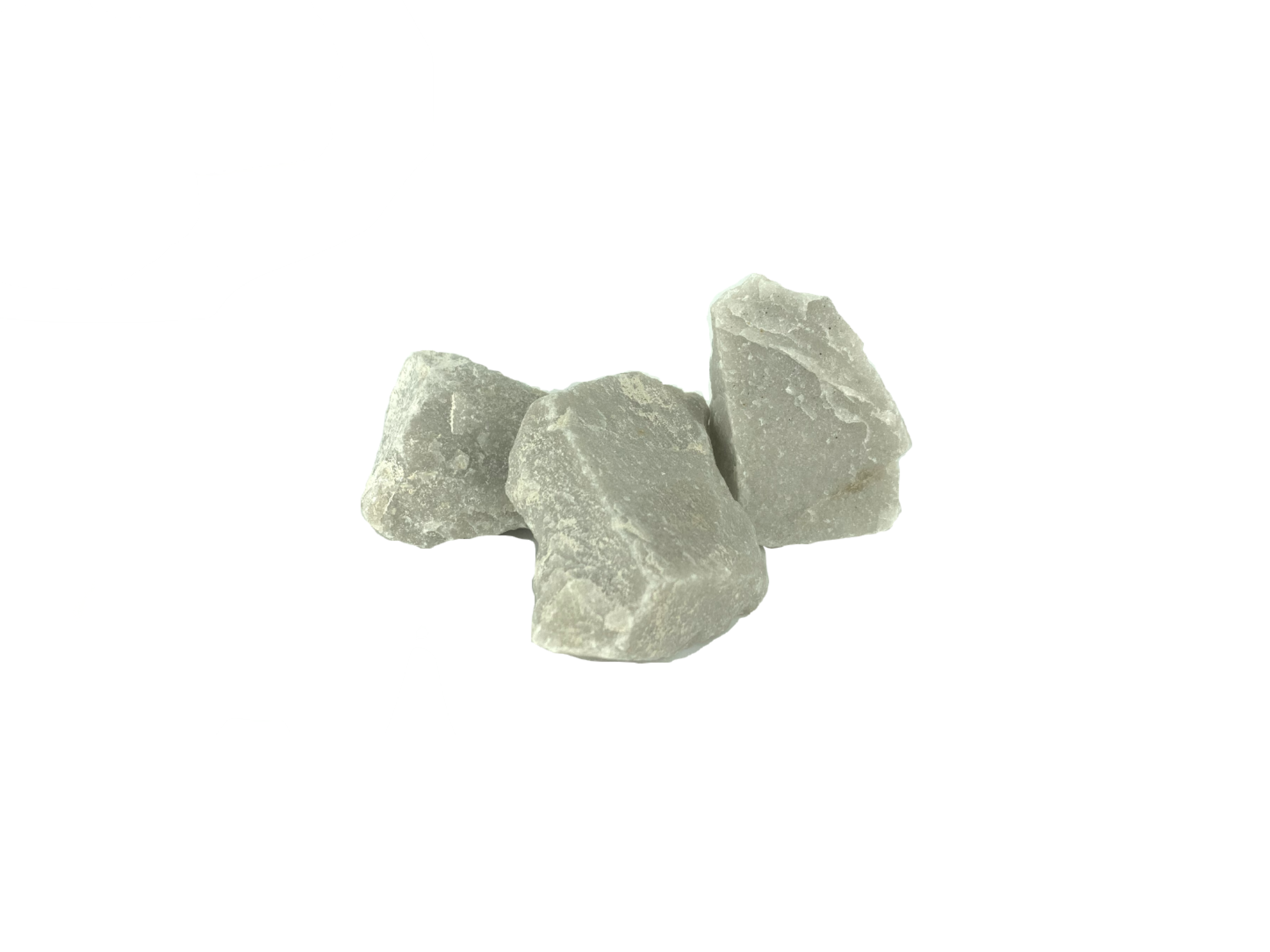
Rock Type: metamorphic
Composition: recrystallized quartz grains
Original Rock: sandstone
Environment: Quartzite forms at many temperatures and pressures.
Distinguishing Characteristics: light grey or white, medium grained, very hard.
Origin of your Samples: Badgeley Island, Ontario
Uses: Quartzite is the raw material used by the glass and ceramics industries.Quartzite samples courtesy of Unimin Canada Ltd.
- Rhyolite
-
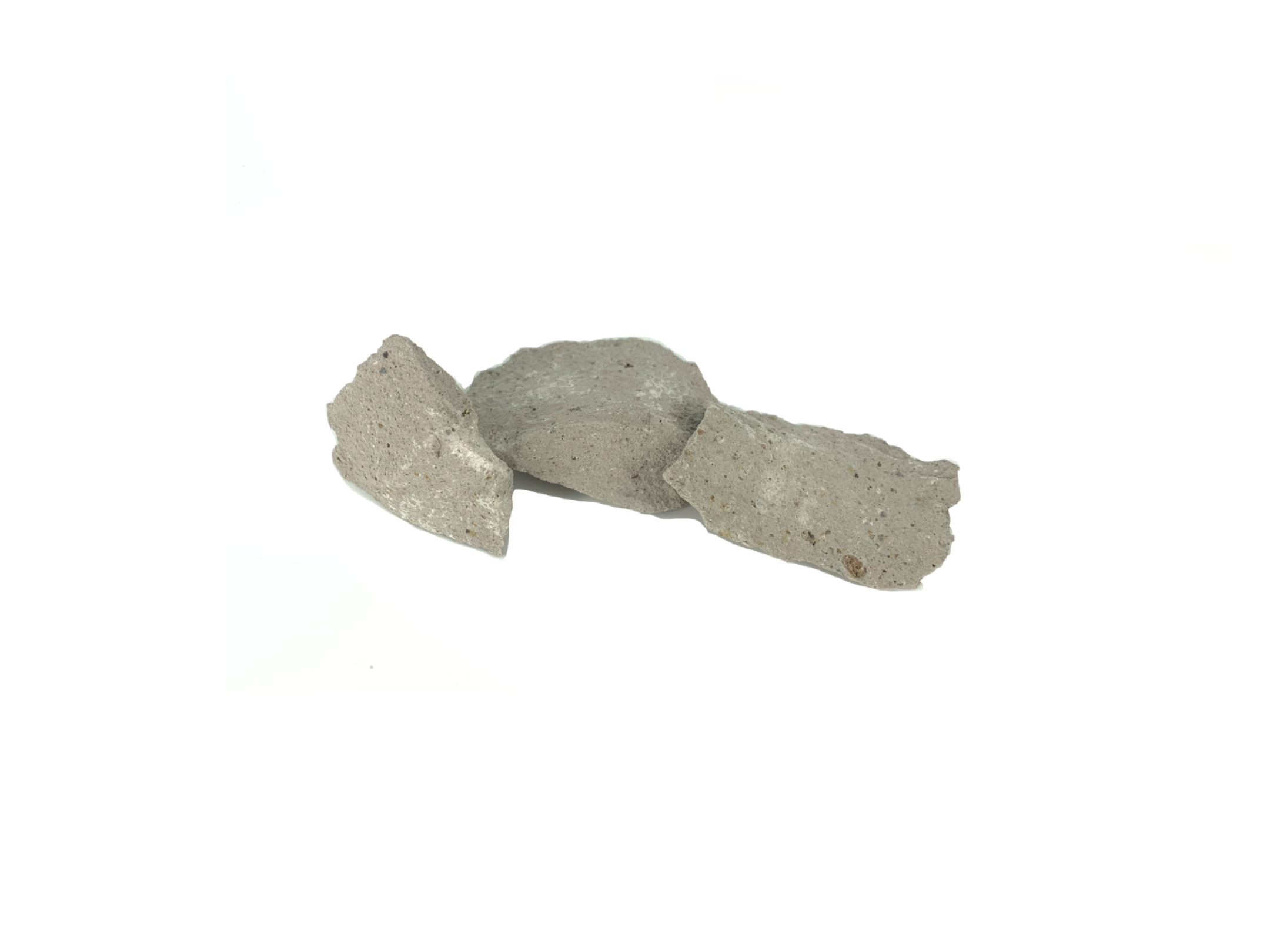
Rock Type: igneous (extrusive/volcanic)
Composition: feldspar, quartz, mica, hornblend
Equivalent to: granite (intrusive/plutonic)
Environment: Rhyolite is formed by magma that has reached the Earth’s surface (lava) and therefore cools very quickly. Lava can explode out of a volcano and make pumice or ash, or flow down its side and make thick layers of fine-grained rock or volcanic glass.
Distinguishing Characteristics: Very fine grained, pinkish-grey, sometimes with dark streaks. If dipped in water and rubbed on a piece of paper, rhyolite will likely tear the paper rather than leave a muddy streak.
Origin of your Samples: Timmins, Ontario
Uses: Black volcanic glass called obsidian and frothy-looking white coloured rock called pumice are other forms of rhyolite. Pumice is used in abrasives, concrete, stone-washing laundries, hand soap, emery boards, and sandpaper; it’s also used in sandblasting.Rhyolite samples courtesy of the Resident Geologist Program, Ontario Ministry of Northern Development and Mines.
- Sandstone
-
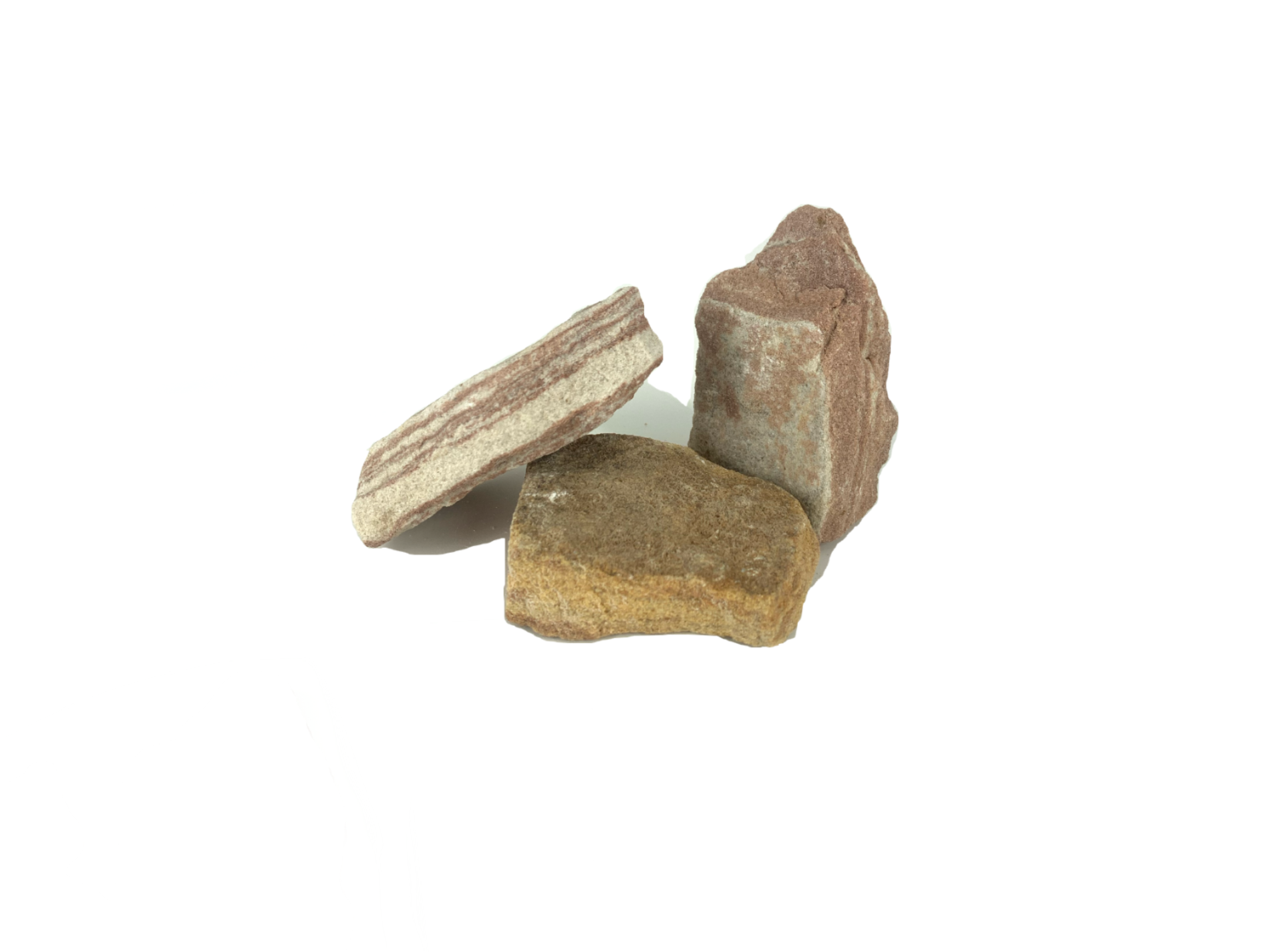
Rock Type: sedimentary
Composition: grains of sand that can be feldspar or quartz - the amount of other minerals, such as mica, depend on how much weathering has occurred.
Environment: Already existing rocks are eroded, and the grains are transported and sorted by rivers. The resulting sand is deposited on beaches, along floodplains or in deltas, where it is eventually buried by other sediments. This causes a slow squeezing of the sediments. As the sediments are compacted, fine clay helps to fuse the larger particles together. The sediments are also cemented by chemicals left by the water in the original sediment. The presence of sandstone indicates that there was water with fairly high energy (waves on a beach or a fastmoving river).
Distinguishing Characteristics: Coarse to very fine grains, beige to grey colour, feels like sandpaper.
Origin of your Samples: Georgetown, Ontario
Uses: Sandstone is used for flagstone that might line your walkway or patio. It is also an important building stone.Sandstone samples courtesy of Rice & McHarg Quarries Ltd.
- Shale
-
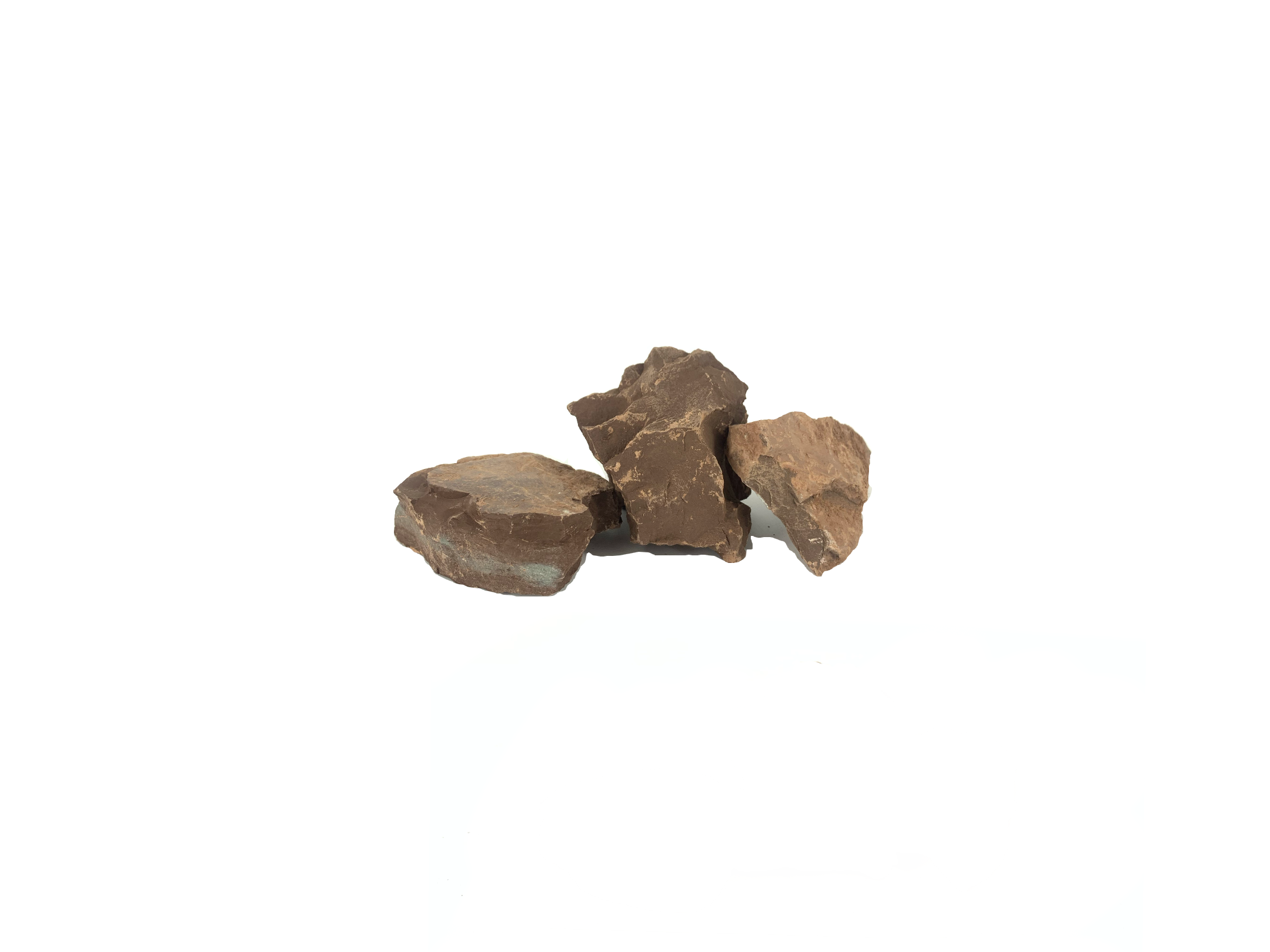
Rock Type: sedimentary
Composition: grains of clay
Environment: Shale sediments are deposited in still water (low energy) such as a lake or a deep, slow river.
Distinguishing Characteristics: dull, reddish- brown, very fine grains (smooth to the touch), breaks easily. If an edge is dipped in water and drawn along a surface, shale will leave a muddy streak.
Origin of your Samples: Aldershot, Ontario
Uses: This type of shale is the raw material used by the brick manufacturing industry in Ontario.Shale samples courtesy of Hanson Brick Ltd.
- Slate
-
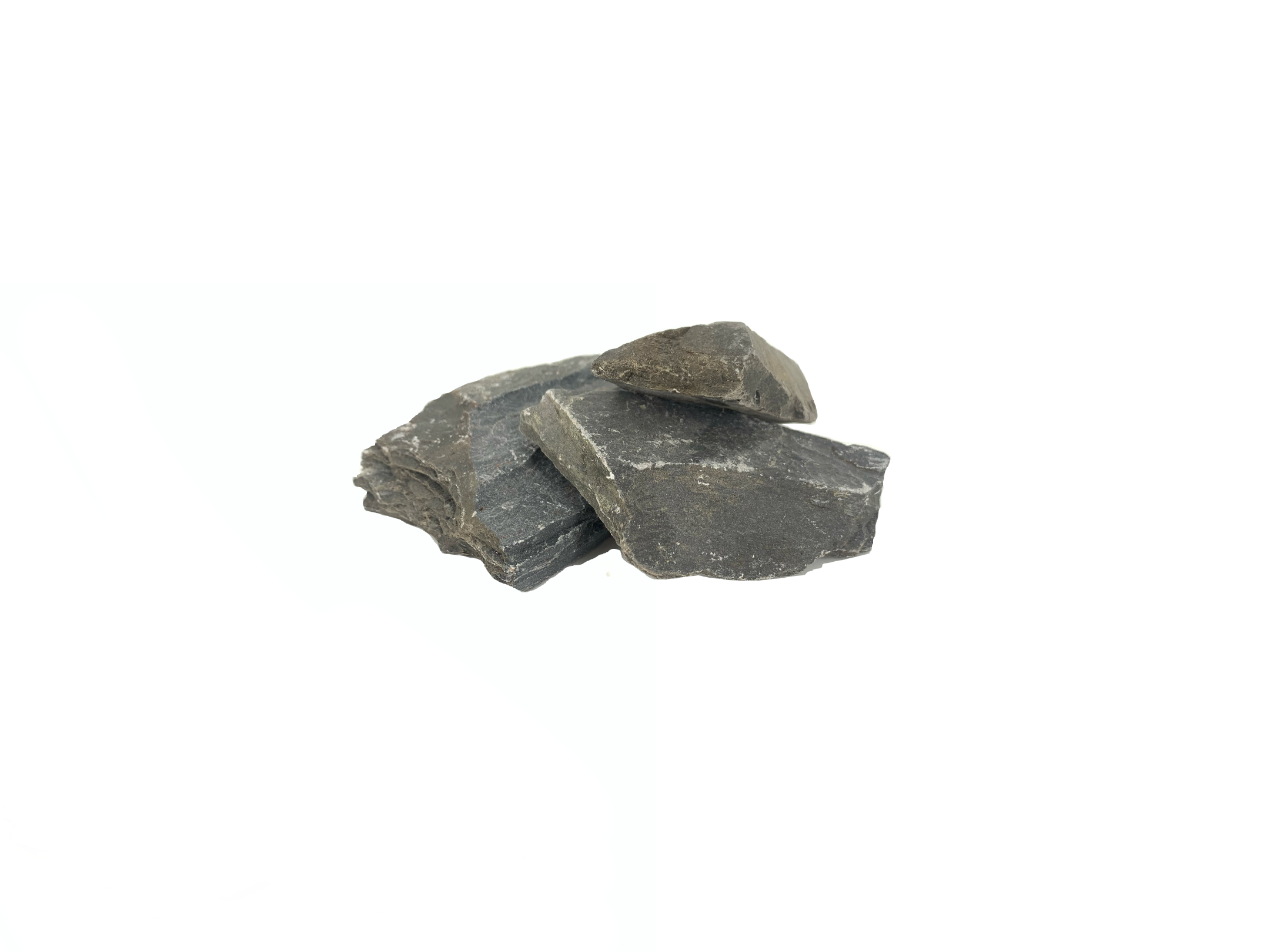
Rock Type: metamorphic
Composition: clay minerals
Original Rock: shale
Environment: Slate forms from the heat and pressure when shale is buried deep in the crust. To make slate, shale must be buried at a depth of about 10 km. The temperature at that depth is about 200°C.
Distinguishing Characteristics: dark grey to black, very fine grains (smooth to the touch), harder than shale, distinct layers are visible.
Origin of your Samples: Vermont, USA
Uses: slate is used in flooring and roofing materials. In the past, slate was used as chalkboards.Slate samples courtesy of Heather and Little Ltd.

